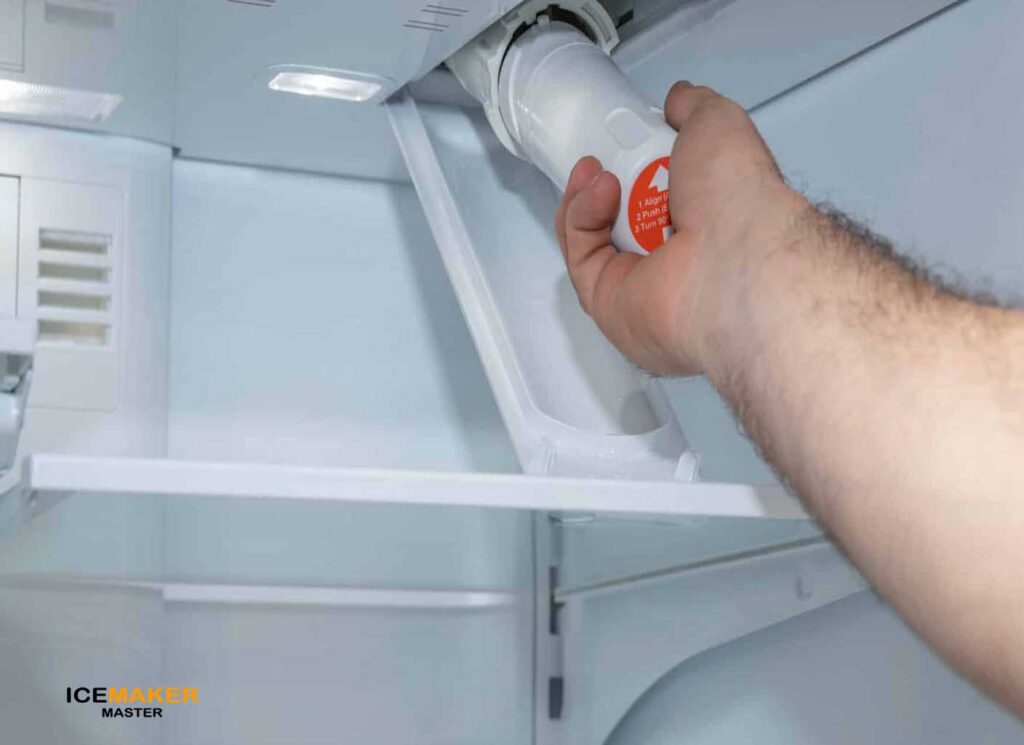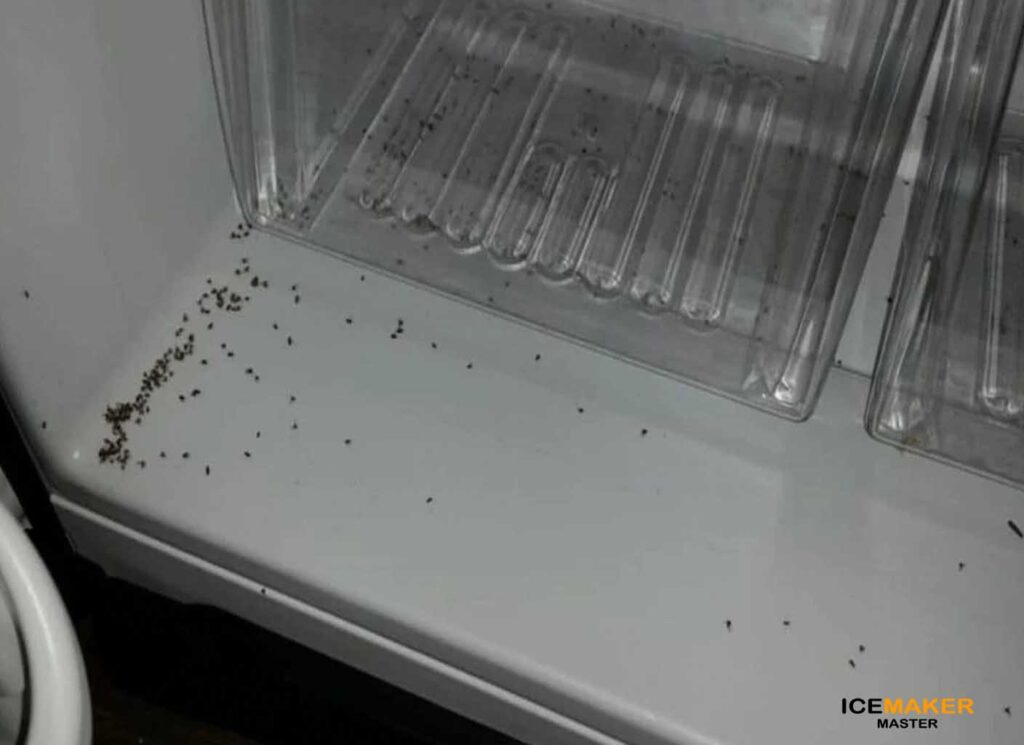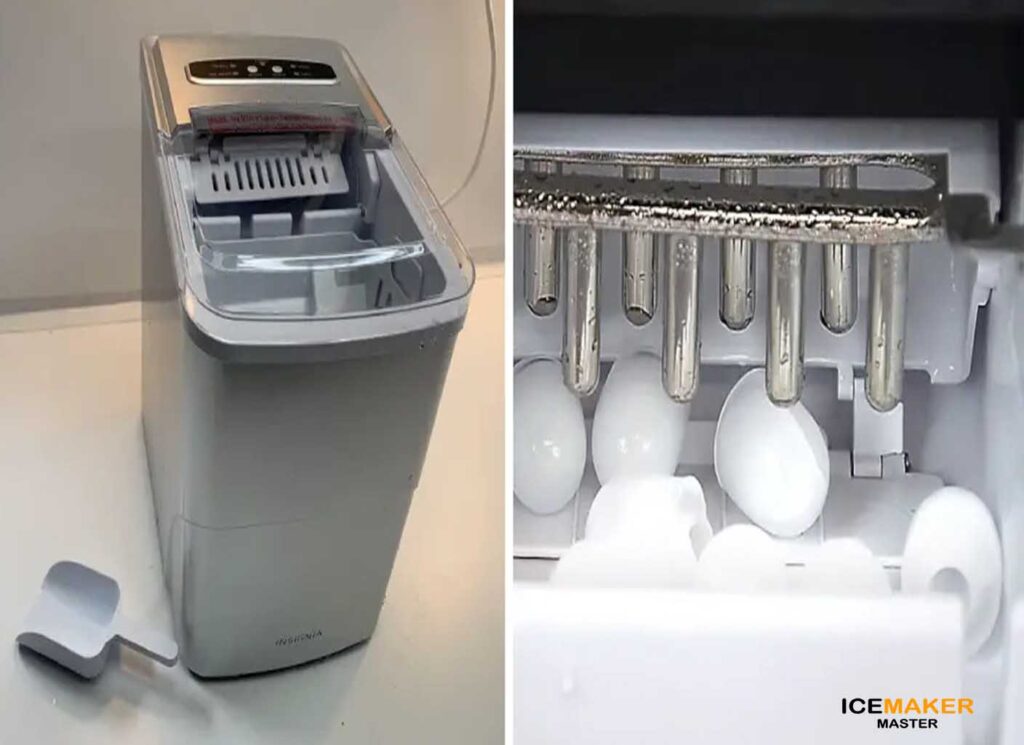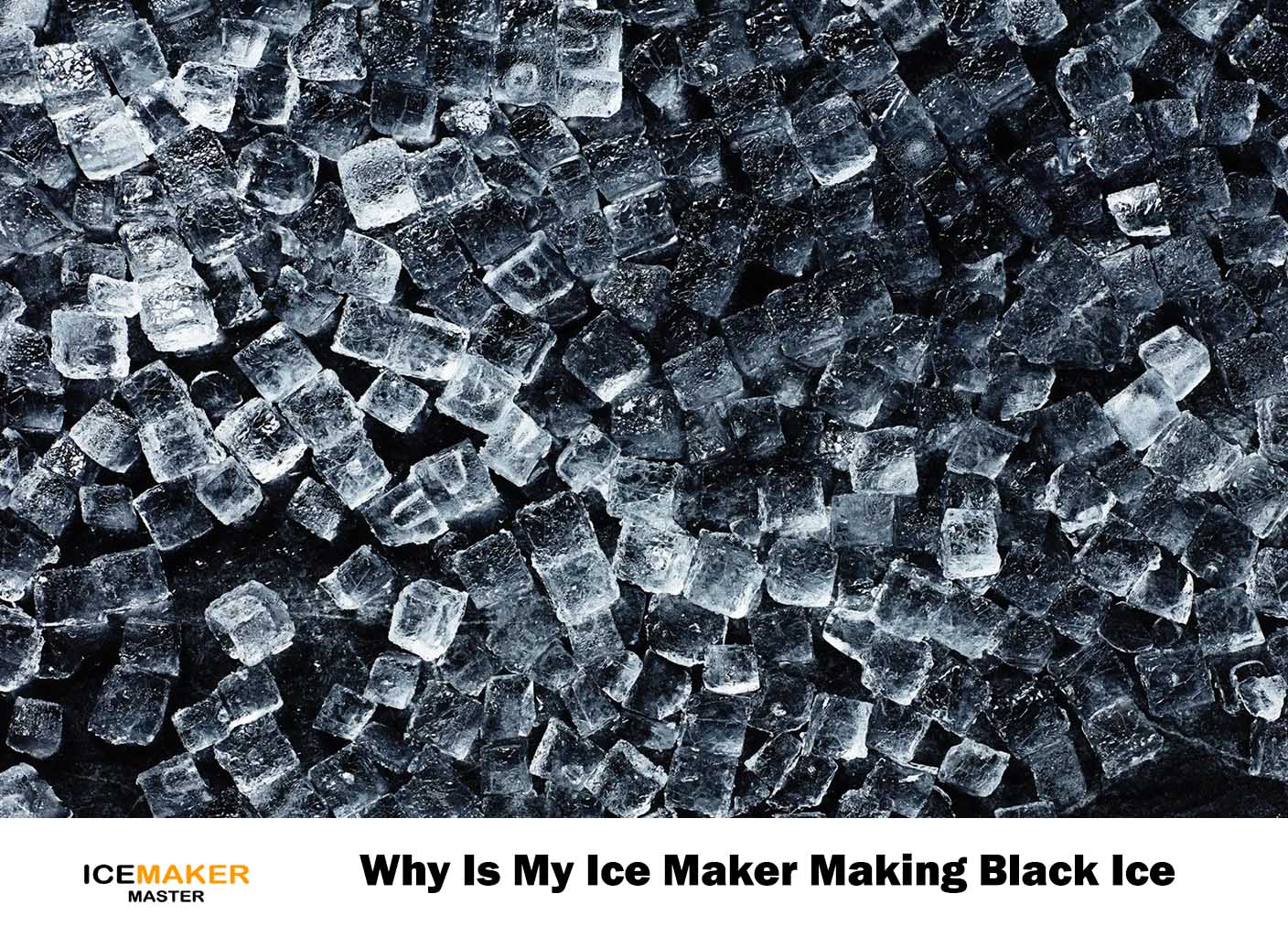Ice makers are like our cool companions who are always ready to provide refreshing ice for our drinks. But sometimes you may find black ice in your ice tray. It is a bit confusing and might make you wonder why is my ice maker making black ice.
If you don’t know the reason why your ice is making black ice then don’t worry. In this blog, we will help you to figure it out. We are going to explore why your ice maker is making black ice and what you can do about it. Think of it as a journey to uncover the secrets behind this dark ice mystery.
Together, we will look at the possible reasons and find simple solutions so that your ice stays clear, clean, and perfect for your favorite beverages.
There are four main possible reasons for your ice maker to make black ice:
Mold and Mildew
The appearance of black ice in your ice maker often traces back to the unwelcome presence of mold and mildew. These microscopic organisms thrive in the moist environment of the ice maker, creating a breeding ground that results in the formation of dark spots or streaks within the ice cubes.

To fix this issue, a proactive approach is essential. Regularly cleaning and sanitizing your ice maker are paramount in preventing the buildup of mold and mildew. An effective solution involves using a mixture of vinegar and water for cleaning, as vinegar possesses natural disinfectant properties.
This cleaning concoction should be meticulously applied to all components of the ice maker, ensuring a thorough disinfection process. By adopting this simple yet crucial maintenance routine, you not only eliminate existing mold and mildew but also create an inhospitable environment for their return, ensuring that the ice produced remains free from the dark hues that compromise its quality and safety for consumption.
Also Read - Find how to clean your frigidaire ice maker with easy steps.
Dirty Water Supply
Discolored ice in your ice maker may arise due to impurities or contaminants in the water supply, with sediment, minerals, and rust from aging pipes contributing to the formation of black particles in the ice cubes. The presence of these substances can compromise the overall quality and appearance of the ice produced.
A practical solution to fix this issue involves taking steps to enhance the quality of the water used in your ice maker. Consider installing a water filter in your refrigerator to effectively remove impurities before they reach the ice-making process.
Alternatively, using filtered water to fill the ice maker can achieve a similar result, minimizing the presence of substances that can compromise the clarity and purity of your ice. By adopting these preventative measures, you not only ensure the production of clean and transparent ice but also contribute to the overall improvement of your ice maker’s performance and longevity.

Deteriorated or Contaminated Ice Maker Parts
As your ice maker operates over time, it’s essential components, including the water inlet valve, ice mold, and dispenser, can experience wear and contamination over time. The gradual deterioration of these parts can introduce foreign substances into the ice-making process, resulting in the undesired appearance of black particles.
A practical solution involves regular inspection of the ice maker components for signs of wear, damage, or contamination. Identifying and replacing worn-out parts is crucial in maintaining the integrity of the ice production process.
Additionally, consistent cleaning of the components is essential to ensure that foreign substances are kept at bay, guaranteeing that the ice produced remains clear, clean, and free from any unwanted discoloration. By adopting these measures, you contribute to the longevity and efficient performance of your ice maker, ensuring its ability to consistently deliver high-quality ice.
Stagnant Water
When water stagnates in your ice maker for extended periods, it can lead to an undesirable taste and appearance in the ice it produces. Stagnation commonly occurs when the ice maker is infrequently used or when there are problems with water circulation within the system.
To tackle this issue, a proactive approach is necessary. Regularly emptying and cleaning the ice bin is crucial, as it facilitates the circulation of fresh water through the entire system. This prevents the water from acquiring unpleasant flavors or appearances associated with stagnation.
If your ice maker tends to be unused for extended periods, a recommended solution involves turning it off and emptying the water reservoir. This ensures that when you do use the ice maker again, it operates with fresh, clean water, guaranteeing the production of ice that is not only clear but also free from any lingering taste associated with stagnant water.

Other reasons
There are some more reasons for the black ice production in the ice maker. These are some of the reasons that you have to keep in mind while finding the reasons for the black ice production.
Algae Growth
In environments with excessive moisture and exposure to light, algae growth may occur in the water supply, leading to the development of dark particles in the ice.
Malfunctioning Water Filter
A defective or old water filter may not effectively remove impurities, allowing contaminants to enter the ice-making process and contribute to the discoloration of the ice.
Residue from Cleaning Products
Inadequate rinsing after cleaning the ice maker with certain chemicals or cleaning products can leave behind residues that affect the color and taste of the ice.

Mineral Deposits
High mineral content in the water may result in mineral deposits forming in the ice maker, causing the ice to appear discolored.
Faulty Seals or Gaskets
Leaks or inadequate seals in the ice maker can introduce external elements into the water supply, affecting the ice’s color and quality
FAQ
Why is the ice from my ice maker turning black?
Black ice can result from various factors, including mold growth, impurities in the water supply, worn or contaminated ice maker parts, stagnant water, algae growth, or issues with the water filter.
Can I still use the black ice produced by my ice maker?
No, it is recommended to avoid using discolored ice, as it may indicate the presence of contaminants. The safety of the ice for consumption depends on addressing and resolving the underlying cause.
How often should I clean my ice maker to prevent black ice?
Regular cleaning is essential. Depending on usage and environmental factors, aim for cleaning every three to six months. More frequent cleaning may be necessary if issues persist.
What is the best way to clean my ice maker to prevent black ice?
Mix a solution of vinegar and water and thoroughly clean all components. Pay attention to areas prone to mold and mildew. Ensure a proper rinse to eliminate any cleaning residue.
Will using filtered water solve the issue of black ice?
Yes, using filtered water can help reduce impurities in the water supply, minimizing the likelihood of black ice. Ensure your water filter is in good condition and replace it regularly.
What should I do if the problem persists despite troubleshooting?
If black ice continues to be a problem, it is advisable to seek professional assistance. Contact the manufacturer’s customer support or consult with an appliance repair specialist to diagnose and address the underlying issue.
Conclusion
The occurrence of black ice in your ice maker stems from various factors, but proactive maintenance ensures your ice stays clean and safe. Regular cleaning, employing filtered water, and checking and replacing worn parts are vital to prevent black ice. Swiftly addressing these issues guarantees the continued convenience of your ice maker, assuring you of consistently clear and high-quality ice for consumption, free from any concerns about its safety or taste.

